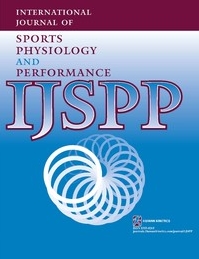Kempton T1, Sirotic AC2, Rampinini E3, Coutts AJ1
1,Sport & Exercise Discipline Group, the School of Leisure, Sport & Tourism, University of Technology Sydney, Sydney, NSW, Australia;2, Melbourne Storm Rugby League Club, Melbourne, VIC, Australia;3, Human Performance Laboratory, MAPEI Sport Research Center, Varese, Italy

PURPOSE: To describe the metabolic demands of rugby league match play for positional groups and compare match distances obtained from high-speed-running classifications with those derived from high metabolic power. METHODS: Global positioning system (GPS) data were collected from 25 players from a team competing in the National Rugby League competition over 39 matches. Players were classified into positional groups (adjustables, outside backs, hit-up forwards, and wide-running forwards). The GPS devices provided instantaneous raw velocity data at 5 Hz, which were exported to a customized spreadsheet. The spreadsheet provided calculations for speed-based distances (eg, total distance; high-speed running, >14.4 km/h; and very-high-speed running, >18.1 km/h) and metabolic-power variables (eg, energy expenditure; average metabolic power; and high-power distance, >20 W/kg). RESULTS: The data show that speed-based distances and metabolic power varied between positional groups, although this was largely related to differences in time spent on field. The distance covered at high running speed was lower than that obtained from high-power thresholds for all positional groups; however, the difference between the 2 methods was greatest for hit-up forwards and adjustables. CONCLUSIONS: Positional differences existed for all metabolic parameters, although these are at least partially related to time spent on the field. Higher-speed running may underestimate the demands of match play when compared with high-power distance-although the degree of difference between the measures varied by position. The analysis of metabolic power may complement traditional speed-based classifications and improve our understanding of the demands of rugby league match play.
Int J Sports Physiol Perform. 2015 Jan;10(1):23-8. PMID: 24897755 DOI: 10.1123/ijspp.2013-0540